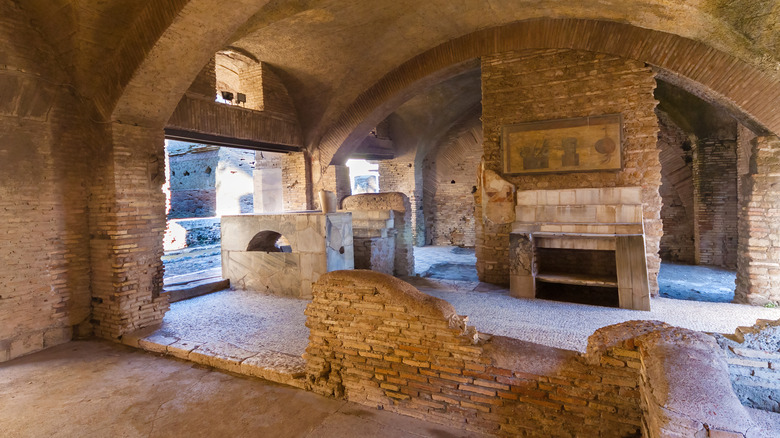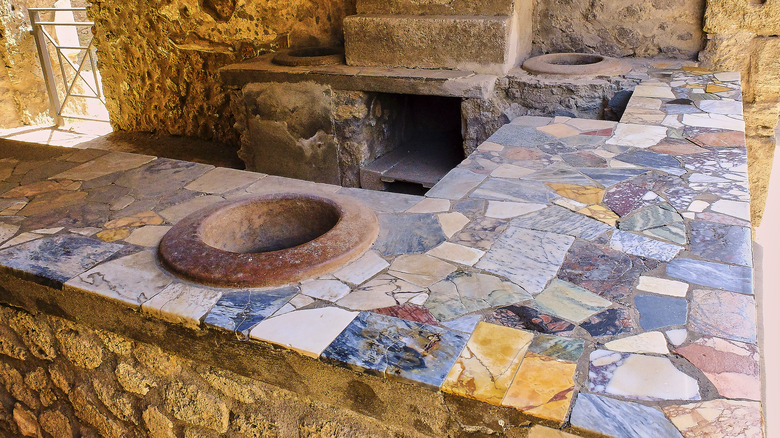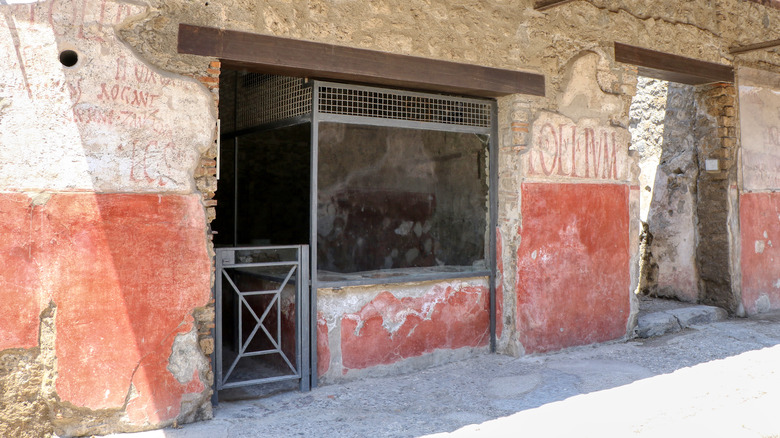The Origins Of Fast Food Go Way Farther Back Than We Thought
Fast food is such an ever-present and ubiquitous part of our 21st century world that we might start to take it for granted. There's going to be a Starbucks around the corner, a Burger King down the street, and you might pass a few McDonald's while you're on your way to, well, pretty much anywhere. But the history of fast food is fascinating, and we're not just talking about how the first McDonald's was turned into a museum. We're also talking about some of the earliest fast food restaurants in history, and to find those you have to go all the way back to ancient Rome and Mesopotamia.
It's fascinating to think about the things we have in common with the people who walked the earth thousands of years ago, and it turns out that one of those things is a desire for food on-the-go. Archaeological discoveries made in the Mesopotamian city of Uruk — which was founded in 4500 BC — include mass-produced food containers believed to have been used for the distribution and consumption of food at places like job and building sites.
Fast forward a bit to ancient Rome. By the time Pompeii was buried by the eruption of Mount Vesuvius in the year 79CE, fast food restaurants hadn't just been invented, but they were wildly popular. They were called thermopolia, and they weren't too dissimilar from fast food restaurants of today. If you were to walk into one, there would be no question as to where you were.
An ancient fast food mentality had developed into scores of restaurants in ancient Rome
In a paper published in The Archaeology And Politics Of Food And Feasting In Early States And Empires, Binghamton University's professor emerita, Susan Pollock, suggests that discoveries of mass-produced bowls and drinking containers indicate what she calls a "fast-food mentality." She says it's likely the shallow, irregularly-formed bowls were used to serve meals on the job, and says that texts suggest employers provided food to workers with the understanding that good food turned into good work.
By the time ancient Rome had established itself as a sprawling empire, fast food was a necessary and widely popular part of everyday society. At the time, it's estimated that only about 66% of middle-class homes had access to kitchen facilities, and that dropped to around 40% when you're looking at working class homes. That meant there were many people who had no choice but to go out for their meals. Thermopolia — the Roman equivalent of fast food restaurants — were wildly popular, and there were 89 such establishments uncovered during the excavation of Pompeii.
Any modern person walking into an ancient thermopolium would feel right at home. Pompeii restaurants were laid out in the same way: An open counter faced the street and would be shuttered at night, allowing people to walk up, order, and get their food. Elaborate frescos advertised the food that was for sale, and most also had an outdoor seating area or garden for diners.
What was on the menu for ancient Roman customers?
Just as fascinating as the fact that there were ancient fast food restaurants in Rome is the menu — and thanks to archaeological discoveries in Pompeii, we know a little about what customers were ordering and enjoying. When one thermopolium — located in a part of Pompeii with high footfall — was excavated in 1911, it was completely intact. Everything from cups and plates to a masonry oven, bronze boiler, and wine containers were still there, and other excavations have yielded remnants of foodstuffs.
One thermopolium in Pompeii still contained pots that held a mix of duck, pig, and goat bones. Paintings depicted chickens and other birds, and the remains of fish and snails suggest that a version of paella was on the menu. In many thermopolia, frescos give pretty straightforward clues as to what was on sale: In addition to fruits, fish, lentils, cakes and breads, cheese, and mulled wine, some locations even served whole birds as a sort of ancient rotisserie chicken option.
Food wasn't all that was on offer at the thermopolium, either. Frescos and graffiti indicate that they were also popular date spots, and that tables were often occupied by gamblers and, specifically, by dice games. Although they were most commonly frequented by the lower classes, there are records of Emperor Nero visiting one when he wanted to see how the common people lived ... which had to be an interesting day for employees and customers alike.


